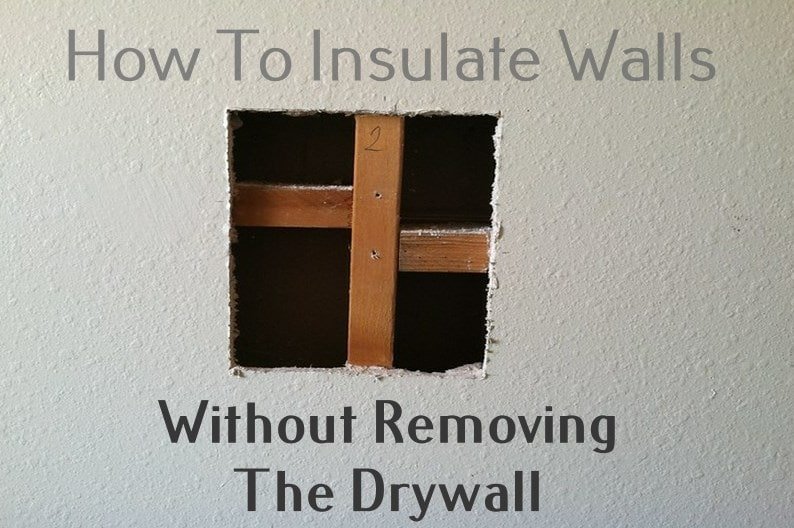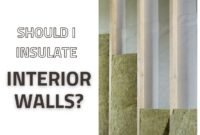Wall insulation plays a crucial role in managing energy costs. Experts suggest that sealing air leaks and adding insulation can lead to approximately 15% savings on energy bills. However, the actual savings depend on factors like the age and location of the house.
While most modern homes come with insulation, many houses built before the 1970s, and even some from the 1980s, lack this feature. Uninsulated walls can lead to discomfort and increased energy costs, making insulation a key factor in home efficiency.
A lack of wall insulation means an overtaxed heating or cooling system that diligently blows hot or cold air with a house envelope that isn’t cooperating. Here we will discuss how to add insulation to existing walls.
How To Insulate Walls Without Removing The Drywall From The Inside
Two effective options are injection foam and blown-in cellulose when insulating a wall without removing the drywall. Both materials are excellent for enhancing energy efficiency and comfort in your home.
Foam Injection
Foam is a material that resists mold and mildew, giving you advantages better than fiberglass insulation.

It has strong expansion properties that can force its way into difficult and impossible areas, including boxes, wires, protruding nails and screws, and other spaces that usually hang up gravity-fed cellulose.
The technique is similar to those individual cans of foam insulation. You may easily buy them on a larger and far more efficient scale. Although professional injection foam insulation is the best, a few manufacturers offer expensive do-it-yourself kits. So, foam insulation becomes the best retrofit choice without any wall damage.
Read also: Install Removable Magnetic Window Insulation
Blown-In Cellulose
Loose-fill cellulose insulation begins as paper and becomes insulation-filling wall cavities. Boric acid is the key ingredient as the chemical compound contributes to making safe cellulose insulation.
Installing blown-in cellulose is a complex and time-consuming process. It involves injecting the material into wall cavities through holes drilled inside or outside the walls. Due to its complexity, seeking professional help for this type of insulation is generally advised.
How To Insulate Finished Walls
After reading how to insulate walls without removing the drywall, is there any chance for you to insulate finished walls?
Yes, you can insulate existing walls either from the outside or inside. When doing the work from outside, you should remove some siding panels so that large holes can be bored. Then, professional installers typically use specialized equipment to blow fiberglass batts or cellulose insulation through the holes into the wall cavities.
If insulating from the inside, the process mirrors the outside approach but involves cutting holes through the drywall instead of removing the siding. This method can be messy, necessitating significant patching and painting of the drywall afterward.
Seven stages can help you ease the process of insulating finished walls:
- First, remove the old paneling on your mobile home wall with a claw hammer and a pry bar.
- Secondly, remove or tap in any nails protruding from the studs with a hammer.
- We advise against removing the previous insulation because it may be very thin and include electrical wires behind or in front. So, let it be.
- Next, try to tape every seam where the pieces of insulation meet using duct tape.
- For each wall you’ve just insulated, try to measure, mark, and cut drywall.
- After that, attach the new drywall to the walls with a drill and 2-inch drywall screws, placing the screws vertically every 4 inches along each stud.
- Cover all seams between drywall pieces with drywall tape, then mud those seams. Allow 12 hours for the mud to dry before sanding and finishing the wall with paint or wallpaper, if you want.
This article will help you understand how to insulate walls without removing the drywall. The insulation will drastically improve the thermal efficiency of the house in both summer and winter. What can be more beautiful than staying cooler when it’s hot and warmer when it’s cold?


